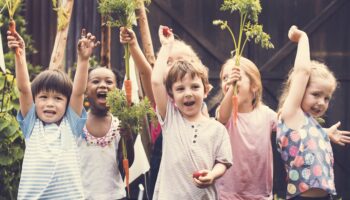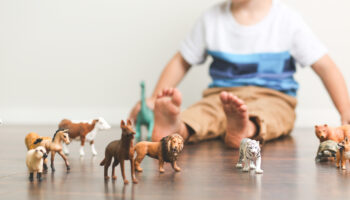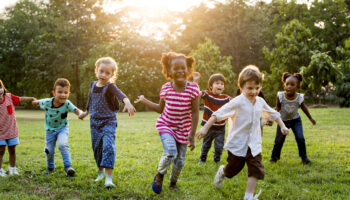By: Lisa Mulliken
Think about yourself as a child. Most likely, much of your time was spent exploring natural materials in your environment: digging for worms, lifting rocks in the creek to find salamanders, climbing trees, playing with your dog, building a snow fort in the backyard. These experiences engaged our senses, helped us construct knowledge about our environment and taught us to love and respect the world we live in.
All children are naturally curious and benefit from opportunities to interact with the natural environment, therefore; the role of the early childhood teacher is to provide many safe, hands-on nature and science activities that foster curiosity and experimentation. Children need experiences that encourage them to ask questions, explore, conduct investigations and look for answers. These experiences should take place in the classroom and outdoors and should include planned as well as spontaneous opportunities.
Nature and science materials and activities engage all the senses and invite investigation by encouraging children to smell, taste, hear, touch and see. In your classroom, you can enhance the environment through the use of natural objects. For infants and toddlers, mount interesting objects such as shells, wood and sponges low on a wall for children to explore. Make an interesting 3-D display by suspending a small tree branch from the ceiling and hanging natural objects from it. For preschoolers and school-age children, provide natural materials that they can incorporate into their play, such as: placing rocks and driftwood in the sand table, adding shells to the play dough tools or placing nests and feathers along with artificial birds and eggs on a small table to encourage dramatic play. Try placing a basket of pumpkins and gourds in the art area along with paints of similar colors.
In the outdoor environment, enhance children’s nature and science experiences through the addition of bird feeders, a rain gauge or spray bottles filled with water. Try adding buckets and shovels to encourage children to dig in dirt or sand to find interesting items. The addition of magnifying glasses and measuring tapes will encourage children to examine their finds.
Children also experience nature and science in everyday events. Teachers can take advantage of these events by drawing children’s attention to them. Teachers can help children notice and learn through everyday events such as: noticing how fast a car rolls down a ramp, looking out the window and discussing the weather, making a class book on how to care for the class pet or discussing the new grass and spring flowers on the playground.
Incorporating many developmentally appropriate science and nature materials and experiences provide children with the opportunity to experiment and explore the world around them and will help create a lifelong interest in and respect for our environment.




